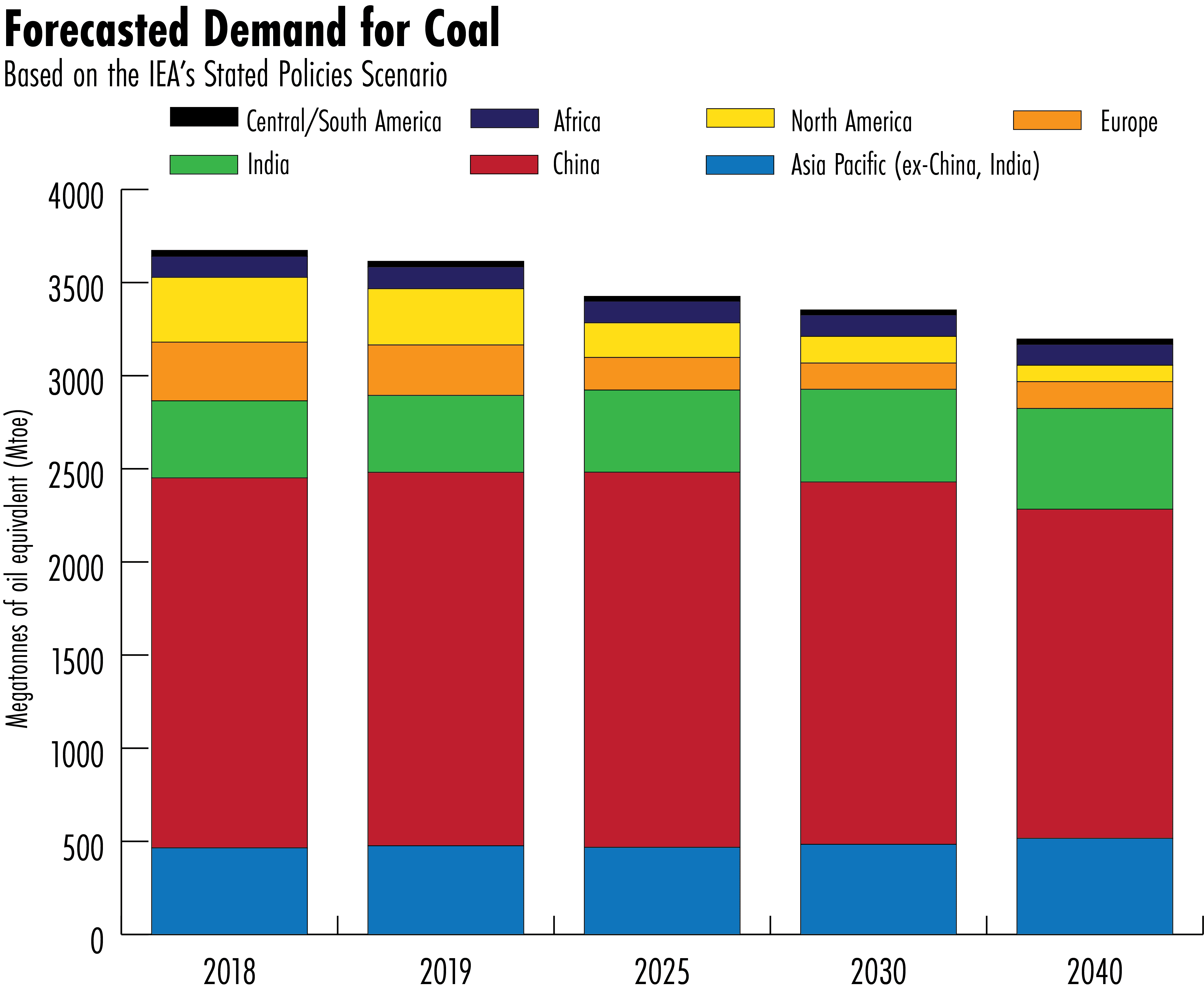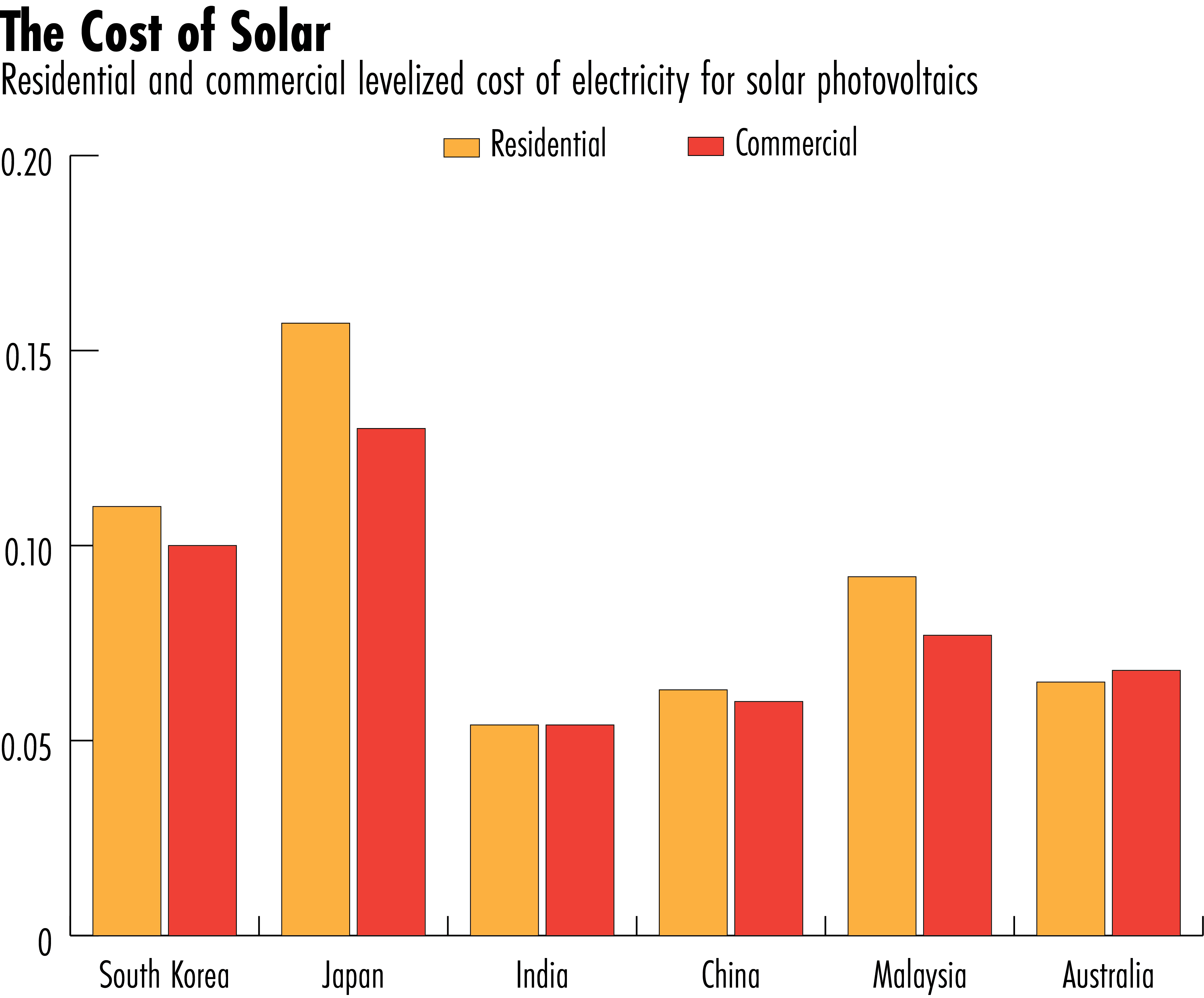
Dr. Scott Gottlieb on Finding Cures for Rare Diseases
Former FDA Commissioner Dr. Scott Gottlieb joins ‘Squawk Box’ to discuss the ongoing research and efforts at the FDA to find cures for rare diseases.…
Thought Leader: Scott Gottlieb

Media coverage of the COP26 climate summit underway in Glasgow has been fixated on China. Fair enough — China emits nearly 30 percent of the world’s carbon, burns nearly half of the world’s coal, and did not even send Xi Jinping to the summit. But while China’s climate policies deserve scrutiny, other countries in the Indo-Pacific have an even worse coal habit. If the Asia-Pacific ex-China were a country, it would be the largest emitter in the world, and both the largest coal producer and consumer. The planet cannot get close to “net zero” emissions without solving the problem of Asia’s coal dependency.
There is still hope, but it won’t be easy or pretty. First, Asian economies need alternative sources of baseline power to compete with coal. That means nuclear and natural gas, as intermittent renewables like solar and wind currently aren’t viable on their own. Second, the cost of renewables needs to fall far enough for Asia’s poorer economies to want to shut down their coal industries, despite the financial and social costs. And third, outside investors need to pony up, leveraging public and private capital to invest in Asia’s energy transition. For these three stars to align, Asia ex-China will need outside help — not just from Western countries, but also from Beijing.

Weaning the region off coal is the region’s first major problem. India, Japan, and South Korea, the three biggest economies in Asia after China, together represent 12 percent of global emissions. South Korea has promised to shut down 30 of its oldest and least efficient coal plants, but not until 2034. Japan projects that it will still get 19 percent of its power from coal by 2030. And in India, the fleet of coal power plants is very young, and will keep operating for decades unless politicians decide to shut them down. Most of these plants are the dirtiest, “subcritical” kind, according to Global Coal Plant Tracker. The government continues to build more, despite the immense downside for public health. This doesn’t bode well.
Worse, Asia is the world’s fastest-growing region, both economically and demographically. In South Asia in particular, many rural areas do not even have electricity connections. The result is that standing still means moving backwards: To break their coal habit, Asian economies will need to meet all of this new energy demand from clean sources and also replace existing coal-fired power plants with something else.
The first thing Asian economies need is an affordable alternative source of baseline power. Coal-dependent economies are used to the convenience of a reliable supply of energy, even at night and on non-windy days. As the baseline share of electricity production declines, that convenience goes away. Energy supply gets more volatile, and so do prices. As we are seeing today across Asia, spiking electricity prices hit the poorest households hardest — and most countries in Asia ex-China are democracies with a lot of poor households. In theory, energy storage technology could solve this problem. But we are several years away, even in the best case-scenario, from batteries becoming cheap enough to use at scale in the electricity grid.
The two most realistic alternative sources of baseline power are nuclear and liquified natural gas (LNG). In fact, the biggest Asian economies will need to ramp up both sources of power. Natural gas isn’t carbon neutral, so it can’t get the world to net zero by itself. But it’s much less polluting than coal. Asian economies are now building the infrastructure to import much more LNG.
Some countries will choose to use nuclear. Japan closed down most of its nuclear reactors after the 2011 Fukushima disaster; now it is restarting several of them. India wants to scale up nuclear production. Not everyone is on board: South Korea wants to phase out nuclear power from 29 percent in 2020 to only 6 percent in 2050. That’s a lot of zero-emission, baseline power that Seoul will need to replace. Korean policymakers haven’t proposed a credible plan to plug the gap.
Meanwhile Asian economies won’t adopt renewables at scale until they become much cheaper. True, the cost of renewables has been plummeting for two decades: In parts of India, solar and wind are now so cheap that the most cost-effective choice is to shutter existing coal plants. But the decision to shut down a major industry is political. In Australia, home to 14 percent of global coal reserves, Prime Minister Scott Morrison famously held up a lump of coal in a speech to the House of Representatives in 2017, saying: “This is coal. Don’t be afraid. Don’t be scared. It won’t hurt you.” The country has no plans to stop exporting its coal. Indonesia, the world’s top exporter of thermal coal, has pledged to achieve “net zero” emissions by 2060, but has yielded to domestic pressure and plans to keep building new coal plants through 2030. In India, the state-owned coal conglomerate is the fifth-biggest employer in the country and is the backbone of several states’ economies. Most Asian countries won’t shutter their coal plants until the economic argument for doing so is overwhelming.

Asian economies also need more technical and financial support. Even if renewables are cheaper in theory, building a solar field requires much more up-front investment than a coal plant with the same capacity. Japan can borrow cheaply, but most poor Asian countries need to pay high interest rates to borrow from the bond market. In 2009, the world’s rich countries collectively promised to mobilize $100 billion annually to finance the energy transition in the developing world. OECD data show that they are falling far short. Rich countries and multilateral development banks can and should mobilize more funds. But taxpayers in the United States and elsewhere are unlikely to support anywhere the level of financing that Asia needs.
In short, to break Asia’s coal addiction and get the planet anywhere close to net zero by mid-century, China’s help will be necessary. China is by far the largest producer and exporter of solar and wind power equipment, so we are relying on China to keep driving prices down. And if Western governments keep falling short of their promises to invest in Asia’s energy transition, then either Chinese money will fill the gap, or no one will. This could take the form of low-interest loans to build out solar and wind farms with Chinese components. It could also mean that China gets more involved in the global nuclear and LNG market.
Asia cannot fully decarbonize without becoming even more financially interconnected with — and dependent on — China. That has big and potentially concerning geopolitical implications. But it is the undeniable arithmetic reality if we care about keeping global warming below the 2-degree “tipping point.” Savvy policy makers in Asia know this. If Western countries want to limit the relentless expansion of China’s influence across the region, they need to get in the game.

Eyck Freymann is a columnist for The Wire. He is the author of One Belt One Road: Chinese Power Meets the World (November 2020) and Director of Indo-Pacific at Greenmantle, a macroeconomic and geopolitical advisory firm. @eyckfreymann
Dr. Scott Gottlieb on Finding Cures for Rare Diseases
Former FDA Commissioner Dr. Scott Gottlieb joins ‘Squawk Box’ to discuss the ongoing research and efforts at the FDA to find cures for rare diseases.…
Thought Leader: Scott Gottlieb
Peter Zeihan: U.S. Navy Seizes Russian Tanker
The US Navy just seized a shadow fleet tanker that managed to slip past the naval quarantine around Venezuela. The tanker reflagged as Russian while…
Thought Leader: Peter Zeihan
Erika Ayers Badan: Surviving Company Failure
In this episode of WORK: Unsolicited Advice, Erika talks through what it really looks like to come out of the worst month of your career…
Thought Leader: Erika Ayers Badan

